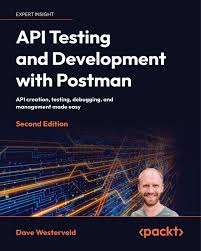API Testing and Development with Postman: A Comprehensive Guide
Introduction
In today's digitally driven world, APIs (Application Programming Interfaces) have become the backbone of modern software applications. They enable seamless communication and data exchange between different systems, services, and devices. To ensure the quality, reliability, and performance of APIs, robust testing is essential. Postman, a powerful API development and testing tool, has emerged as a popular choice for developers and testers alike.
This white paper will delve into the intricacies of API testing and development using Postman, providing a comprehensive overview of its features, best practices, and real-world applications.
Understanding APIs and Their Importance
An API is a set of definitions and protocols for building and integrating application software. It specifies how software components should interact, enabling developers to create modular and reusable applications. APIs are ubiquitous, powering everything from social media platforms to mobile apps and cloud services.
The Role of API Testing
API testing is a crucial aspect of software development that focuses on validating the functionality, performance, security, and reliability of APIs. It involves:
- Functional Testing: Verifying that the API returns the correct responses to specific requests.
- Performance Testing: Evaluating the API's response time, throughput, and scalability under different load conditions.
- Security Testing: Identifying vulnerabilities and weaknesses in the API, such as injection attacks, unauthorized access, and data breaches.
- Reliability Testing: Assessing the API's stability and error handling mechanisms.
Postman: A Powerful Tool for API Development and Testing
Postman is a versatile tool that simplifies API development, testing, and collaboration. Its key features include:
- Request Building: Create HTTP requests with various methods (GET, POST, PUT, DELETE, etc.) and customize headers, parameters, and body content.
- Response Inspection: Analyze API responses, including status codes, headers, and body content.
- Test Scripts: Write automated tests using JavaScript to validate API behavior.
- Collections: Organize API requests into collections for easy management and sharing.
- Environments: Manage different API environments (e.g., development, testing, production) with variable values.
- Monitoring: Track API performance and uptime.
- Collaboration: Share collections and workspaces with team members.
Best Practices for API Testing with Postman
- Clear Test Planning:
- Define clear objectives and scope for your API tests.
- Identify critical endpoints and test cases.
- Effective Test Case Design:
- Create well-structured test cases that cover various scenarios.
- Consider positive and negative test cases to validate both expected and unexpected behavior.
- Leverage Postman's Features:
- Utilize Postman's built-in features to streamline testing efforts.
- Use variables, scripts, and environments to create flexible and reusable tests.
- Write Robust Test Scripts:
- Write concise and maintainable test scripts using JavaScript.
- Validate response codes, headers, and body content.
- Implement error handling and logging mechanisms.
- Collaborate Effectively:
- Use Postman's collaboration features to share collections and workspaces.
- Establish clear communication channels and version control practices.
- Continuous Integration and Continuous Delivery (CI/CD):
- Integrate Postman into your CI/CD pipeline to automate API testing.
- Trigger tests automatically whenever code changes are pushed to the repository.
Real-World Use Cases
- Microservices Architecture: Test the interactions between microservices to ensure data consistency and reliability.
- RESTful APIs: Validate the correct implementation of HTTP methods and resource representations.
- GraphQL APIs: Test complex query structures and data fetching mechanisms.
- Web Services: Ensure the proper functioning of SOAP and REST-based web services.
- Mobile App APIs: Verify the API's compatibility with mobile devices and network conditions.
Conclusion
Postman is a powerful and versatile tool that empowers developers and testers to efficiently develop, test, and document APIs. By following best practices and leveraging Postman's features, you can ensure the quality, reliability, and security of your APIs. As the API landscape continues to evolve, Postman will remain a valuable asset for organizations seeking to deliver high-quality software.
References
- Postman Official Documentation: https://learning.postman.com/docs/introduction/overview/
- API Design and Development: https://swagger.io/resources/articles/best-practices-in-api-design/
By incorporating these insights and best practices, you can effectively utilize Postman to enhance your API development and testing processes. contact ias-research.com for details.



